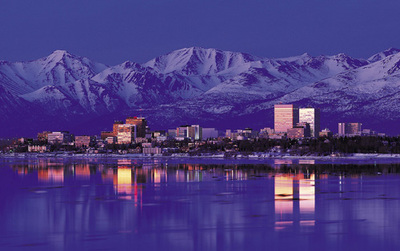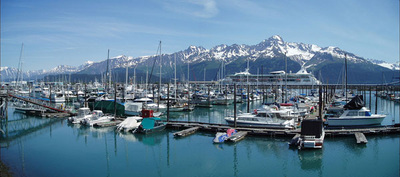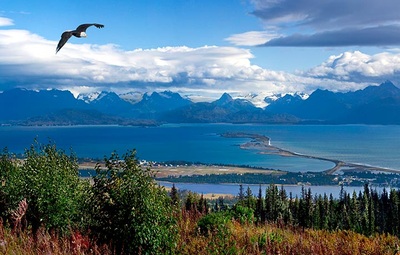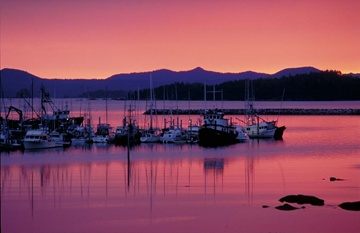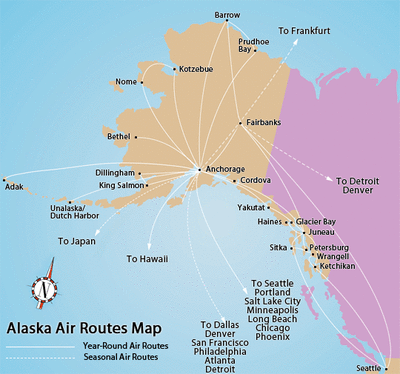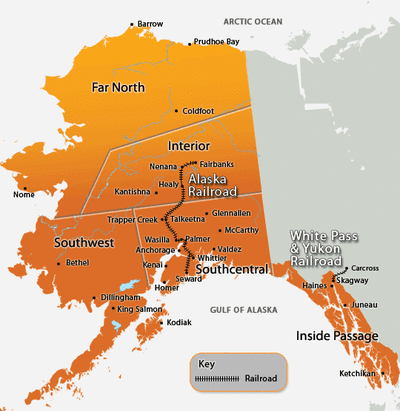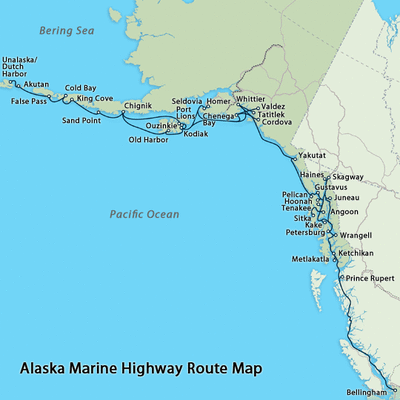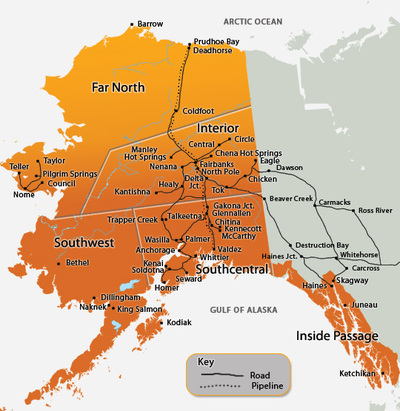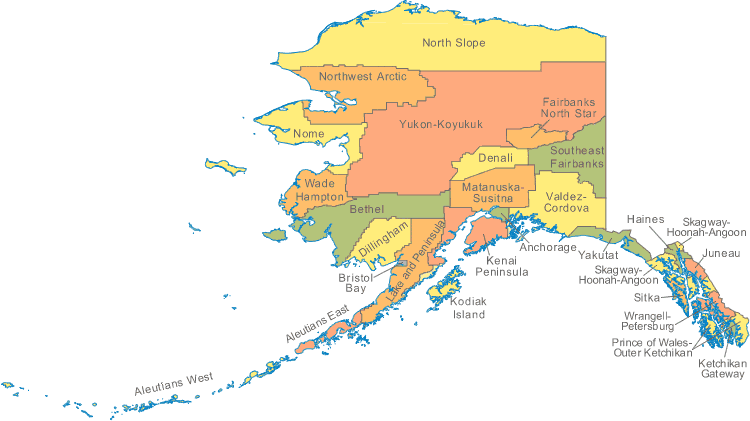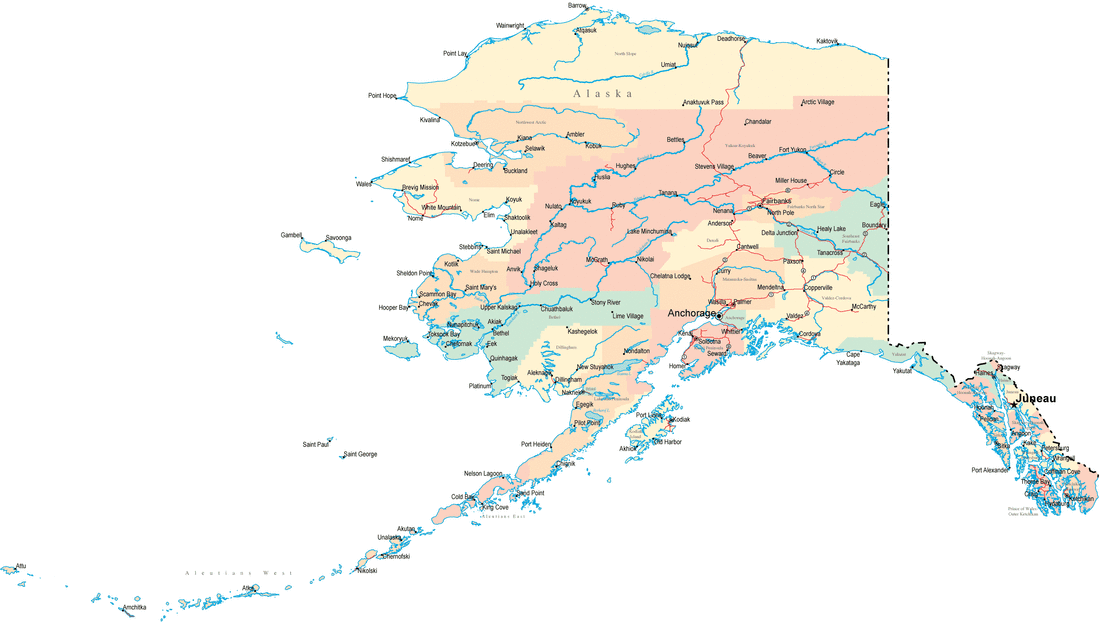ALASKA
|
Must Try "Alaskan Style" foods |

ALASKA NATIONAL PARKS
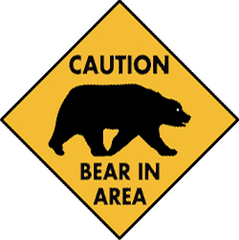
The Essentials for Traveling in Bear Country
One of the things that makes Alaska so special is that all three species of North American bears flourish here, providing a good chance for visitors to actually see one. Even if you don't see one, you will never be far from one, because Alaska is bear country.
1. Avoid surprising bears; look for signs of bears in the area and make plenty of noise.
2. Avoid crowding bears; respect their "personal space."
3. Avoid attracting bears through improper handling of food or garbage.
4. Plan ahead, stay calm, identify yourself, and don't run.
In most cases, bears are not a threat, but they do deserve your respect and attention. When traveling in bear country, keep alert and enjoy the opportunity to see these magnificent animals in their natural habitat.
One of the things that makes Alaska so special is that all three species of North American bears flourish here, providing a good chance for visitors to actually see one. Even if you don't see one, you will never be far from one, because Alaska is bear country.
1. Avoid surprising bears; look for signs of bears in the area and make plenty of noise.
2. Avoid crowding bears; respect their "personal space."
3. Avoid attracting bears through improper handling of food or garbage.
4. Plan ahead, stay calm, identify yourself, and don't run.
In most cases, bears are not a threat, but they do deserve your respect and attention. When traveling in bear country, keep alert and enjoy the opportunity to see these magnificent animals in their natural habitat.
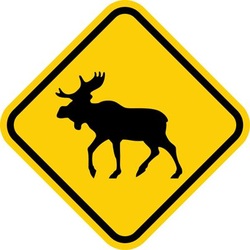
Moose Safety
Visitors to Alaska are often concerned about encountering bears; yet more people each year are injured by moose than by bears.Moose aren't inherently aggressive, but will defend themselves if they perceive a threat. When people don't see moose as potentially dangerous, they may approach too closely and put themselves at risk.
1. What to do if you observe an aggressive moose. Tell others in the area. Call local Police at 911.
2. Recognize the Signs of an Aggressive Moose. The moose stops eating and stares at you. The moose lays its ears back and raises the hair on its hump. The moose licks its lips or clicks its teeth. The moose lowers its head and walks towards you.
3. What to do if attacked by a moose. Run and place a strong barrier between you and the moose. If you get knocked to the ground, curl up in the fetal position. Protect your head with your arms. Do not move until the moose is a safe distance from you. Use any means you can to protect yourself from an aggressive moose.
4. How to observe moose safely. Watch moose from a safe distance. Control pets, remember moose view dogs as wolves a natural predator. Avoid loud noises and don’t chase or harass moose for action shots. Don’t crowd or feed moose. The harassment or feeding of a wild animal is a crime in the State of Alaska. Don’t walk between a cow moose and a calf.
5. Don’t underestimate moose. Moose may appear docile but they are very large and agile wild animals. Moose can weigh up to 1200 pounds and can run 30 mph. Moose use their hooves and antlers for defense. Enjoy watching moose from a safe distance.
Visitors to Alaska are often concerned about encountering bears; yet more people each year are injured by moose than by bears.Moose aren't inherently aggressive, but will defend themselves if they perceive a threat. When people don't see moose as potentially dangerous, they may approach too closely and put themselves at risk.
1. What to do if you observe an aggressive moose. Tell others in the area. Call local Police at 911.
2. Recognize the Signs of an Aggressive Moose. The moose stops eating and stares at you. The moose lays its ears back and raises the hair on its hump. The moose licks its lips or clicks its teeth. The moose lowers its head and walks towards you.
3. What to do if attacked by a moose. Run and place a strong barrier between you and the moose. If you get knocked to the ground, curl up in the fetal position. Protect your head with your arms. Do not move until the moose is a safe distance from you. Use any means you can to protect yourself from an aggressive moose.
4. How to observe moose safely. Watch moose from a safe distance. Control pets, remember moose view dogs as wolves a natural predator. Avoid loud noises and don’t chase or harass moose for action shots. Don’t crowd or feed moose. The harassment or feeding of a wild animal is a crime in the State of Alaska. Don’t walk between a cow moose and a calf.
5. Don’t underestimate moose. Moose may appear docile but they are very large and agile wild animals. Moose can weigh up to 1200 pounds and can run 30 mph. Moose use their hooves and antlers for defense. Enjoy watching moose from a safe distance.
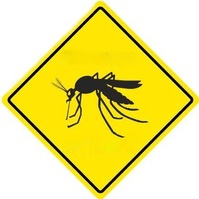
Mosquitos in Alaska
No question: mosquitoes can be a pain in the neck. And the arm. And the leg. And just about anywhere we forget to—or don't want to—cover up. Alaska has 35 species of mosquito, and all but a few will be more than happy to nibble on humans. But mosquitoes are only really an issue for Alaska visitors from the second week in June to the last week in July, and even then, they're not nearly as bad as myth would have it.
Alaska Mosquito Tips
If you do find yourself in a heavy congregation (mosquitoes seem to be most active at dawn and twilight), there are easy steps you can take to block out the nuisance:
No question: mosquitoes can be a pain in the neck. And the arm. And the leg. And just about anywhere we forget to—or don't want to—cover up. Alaska has 35 species of mosquito, and all but a few will be more than happy to nibble on humans. But mosquitoes are only really an issue for Alaska visitors from the second week in June to the last week in July, and even then, they're not nearly as bad as myth would have it.
Alaska Mosquito Tips
If you do find yourself in a heavy congregation (mosquitoes seem to be most active at dawn and twilight), there are easy steps you can take to block out the nuisance:
- Tight-weave cotton shirts and pants work better than more porous synthetics.
- Wear khaki or neutral colors. Mosquitoes are attracted to dark colors, especially blue.
- Don't use scented soaps, lotions, or shampoos.
- If you're taking a multi-day backpacking or float trip, bring a headnet for backup.
- Use repellent.


 Juneau
Juneau
